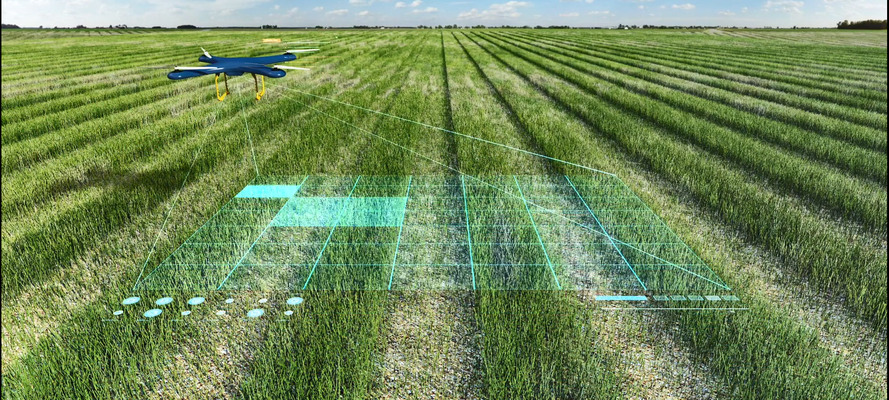Geodesign #7: We have identified eight key defining moments as an introduction to this emerging design movement—from Minecraft to algorithmic farming.
Surely, every Sims, Pokemon or Minecraft player in the early 2000s has been confronted with the critique to take their head out of their virtual reality and go out into the real world. Nowadays, we live in a world in which the digital and geological are merging. In today's digital world, yesterday’s Minecraft players are today's geodesigners.
Capturing the globe through data
Nowadays, we transform the world into digital realms and vice versa. Google Earth captures the entity of the planet in digital format whilst wildlife safaris are turning into data safaris as visitors are taking pictures and uploading the information on platforms as data for scientists to analyze. The Internet of Things captures every element of our planet in the form of data with the input of humans, sensors, robots, satellites, and phones. This data is virtually stored in the world wide web and physically stored in energy-intensive data centers. The world has become a data world with a rich digital biodiversity that we cannot capture solely with the human mind. Data driven computer models and algorithms now integrate the data to make predictions for our landscape design.
The world has become a data world with a rich digital biodiversity that we cannot capture solely with the human mind. Data driven computer models and algorithms now integrate the data to make predictions for our landscape design.
ESRI (Environmental Systems Research Institute) is one of the leading organizations in assessing and simulating our landscape by combining design and geospatial analysis under the integrated framework of geodesign. From flood management, to collaborative urban planning, to design efficient and sustainable farmland; Esri designs and speculates the future by integrating geographical information systems with design thinking. They employ various methods from GIS, ArcMap and remote sensing to visualize and simulate the landscape. Now farmers no longer have to plough the field but instead have to assess their fields with ArcMap and analyze the data, whilst robots and drones take over the physical labour. The data-driven digital computer simulations design our landscapes, climate and habitats to make them more predictable and efficient. How can we integrate more diverse data to optimize our algorithms of shaping our spaces?

AI landscapes
Urban planners and architects are working with computer-aided design to experiment with new organic forms, free from the restraints of slide rules and protractors. Algorithms can inform, refine and even create new designs, lay out rooms, design entire buildings and even change them over time to meet users’ needs. Giant blobs and famous curvy buildings such as Frank Gehry’s Guggenheim Museum in Bilbao and Future Systems’ Selfridges Department Store in Birmingham consequently decorate the landscape.
AI already determines what we watch, who we talk to and even how our buildings look. It has a specific way of operating, mainly on data-based forecasting. Algorithms can mediate between complex data sets to respond better to change through time and the dimensions that constitute different landscapes - from the biological, geological or atmospheric layer.
Algorithms can mediate between complex data sets to respond better to change through time and the dimensions that constitute different landscapes - from the biological, geological or atmospheric layer.
Potentially AI could simulate even risks and challenges of proposed manipulations into the Earth’s system. Algorithms could predict the patterns of the climate as well as other feedback loops in the interconnected Earth system as it incorporates multiple layers of spatial, geometric or even qualitative data of people. AI charts a way to extend our abilities, along with multiple participants, expanding information technologies, more powerful computational tools and ever big data, to design desirable solutions to address our present challenges - the survival of humanity.
As technologies are still programmed by people, they are usually built on biases that benefit some while disadvantaging others. Can we ensure all life forms are included in the algorithms that design our world? Can AI provide an interface through which we account for the human and nonhuman in the design-process?

Share your thoughts and join the technology debate!
Be the first to comment